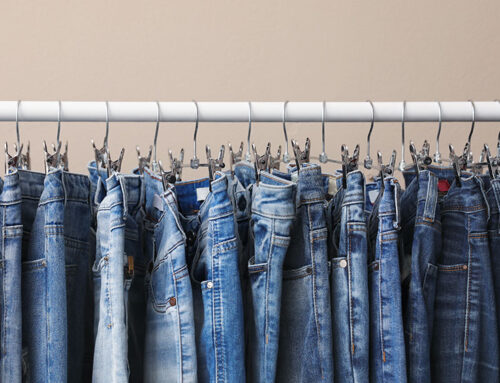Fall For Your Socks
We don’t balk at regular dry cleaning bills for our favorite jacket, shirt, dress or pants, so why not give our socks a little more TLC. With the trend toward novelty and performance socks as a more integral part of our wardrobe, don’t our socks deserve a little more attention. Don’t just throw them for a tumble in the dryer at high heat with the rest of your heavily soiled gym clothing. Follow these basic steps for longer lasting comfort and performance. Your feet deserve it.
For Polymer Base Socks:
- Machine wash at or below a temperature of 40C/104F with like colors (some socks require a temperature of 30C/86F – consult care label for details).
- Wash inside out.
- Do NOT use fabric softener.
- Tumble dry low.
- Do not dry clean

For Cotton/Wool Base Socks:
- Machine wash cold with like colors to avoid color bleeding.
- Wash inside out. Do NOT use fabric softener.
- Air dry flat.

General Love and Care for your Special Socks:
- Never bleach or iron.
- Do not dry clean.
- Store socks flat to maintain their shape.
- Store wool socks clean, preferably in an airtight container.
- Wash socks in a mesh bag to keep them from disappearing into the Sock Twilight Zone. Everyone needs a partner in life.
- Keep your toenails trimmed to help prevent holes.
- Make sure the heel pocket is well placed on the heel of your foot.

We are told not to put labels on people or judge a book by its cover. Fortunately, for our protection, the Federal Trade Commission feels differently about socks. The FTC states that most textile and wool products, including socks, must have a label listing the fiber content, the country of origin, and the identity of the manufacturer or other business responsible for marketing or handling the item.
FIBER CONTENT: Just as fiber is an important part of your dietary health, it is an integral part to the structure of your socks.
For products covered by the Textile Fiber Production Identification Act, the generic fiber names and percentages by weight of each constituent fiber must be listed in descending order of predominance. Fibers comprising 5% or less of the product do not need to be listed separately; with the exception of wool. Exceptions to the fiber disclosure requirement include trimmings, ornamentation, and linings.
Don’t you really want to know what is in your sock drawer? We insist on knowing if we have GMO s or additives in our food. We should know just as much about what we wear on our feet every day.
Both natural and man-made fibers must be identified by their generic names. There is a 3% tolerance for fiber content claims on labels. A deviation of more than 3% constitutes mislabeling, unless the company can prove it resulted from unavoidable variations in manufacturing. The Wool Products Labeling Act does not provide any tolerance for the content of wool products, however, variations from stated fiber content would not be considered mislabeling if the deviation resulted from unavoidable variations in manufacturing.
Country of Origin: Immigration for socks. What are the rules?
- Importers of products must identify the country where the products were processed or manufactured.
- Products made entirely in the U.S. from US materials must be labeled “Made in U.S.A.” or an equivalent phrase.
- Products made in the U.S. of but made from imported materials, must be labeled with both the country of origin of the materials as well as the manufacturing.
- Products manufactured partly in the U.S. and partly abroad must identify both aspects.
Country of origin labeling does not include the origin of parts of the product exempt from content disclosure, such as zippers or buttons. Country of origin information must be included in mail order or Internet advertising. Product descriptions in these ads must include a statement that the product was made in the U.S.A., imported or both.
Now that we know all the rules about what needs to be on the labels, how do we put it all together?
Identification of Manufacturer, Importer or Other Dealer
Textile labels must identify either the company name or the Registered Identification Number (RN) of the manufacturer, importer or another firm marketing, distributing or otherwise handling the product.
Mechanics of Labeling
- The three required disclosures (country or origin, size and content) may appear on one label or on separate labels. They may appear on a label with other information, such as the care instructions.
- All parts of the required information must be clearly legible, conspicuous and readily accessible to the consumer.
- All parts of the fiber content information must be in type or lettering of equal size.
Most socks must be marked on the front of the packages or labels with the country of origin and size designation. For socks that are not fully enclosed in a package, but are banded together by a label or hangtag, the country of origin marking must be placed on the front of the label or tag.
For more information on sock labeling requirements, you can check out the FTC’s website at www.ftc.gov.




